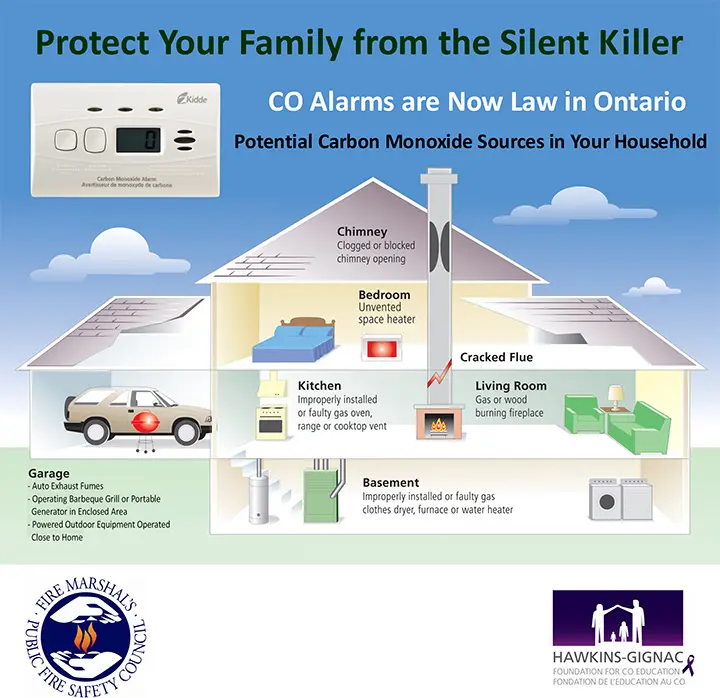Carbon Monoxide Information
January 1 2026 - New Carbon Monoxide Requirements
As of January 1, 2026 new Fire Code requirements on Carbon Monoxide alarm installation will be in effect.
In existing homes - CO alarms will be required on every storey, not just near sleeping areas.
In Multi-Unit Residential Buildings - CO alarms must be installed in all suites meeting certain conditions, service rooms, and, in some cases, public corridors.
In Care Occupancies - includes residential care facilities and certain group homes, where CO alarms will be required in suites and common areas.
For questions please email fireprevention@amherstburg.ca
CO Alarm Requirements For Homes Jan 1 2026 CO Alarm Requirements For Multi Unit Residential Buildings Jan 1 2026 CO Alarm Requirements For Care Occupancies Jan 1 2026
Carbon Monoxide (CO) Alarms are essential for protecting people from the dangers of CO poisoning, a potentially deadly and silent threat. CO is the cause of 15,000 cases of accidental poisoning as well as several hundred deaths each year in North America. It is often referred to as the "Silent Killer".
What It Is?
Carbon monoxide is a poisonous gas that is colorless, odorless, and tasteless that is produced by the incomplete combustion of carbon-containing fuels, such as wood, coal, gas, oil, and charcoal.
Sources
- Fuel-burning Appliances, venting systems and chimneys that have not been serviced and maintained regularly by a qualified service technician
- A chimney blocked by a nest, snow, or other debris
- Exhaust fumes from a running vehicle
- Using fuel-burning appliances designed for outdoor use (BBQ,s, lanterns, chainsaws, lawnmowers) in an enclosed area
Detection
Because CO is undetectable by humans, it's essential to install a carbon monoxide detector in your home. Install CO alarms near all sleeping areas and on every floor. These detectors can alert you to dangerous levels of CO.
Health Risks
CO can be very dangerous when inhaled in large amounts because it interferes with the body's ability to carry oxygen. It binds with hemoglobin in red blood cells, reducing the amount of oxygen delivered to tissues and organs, leading to symptoms like dizziness, headaches, weakness, confusion, nausea, and even death in severe cases.
Symptoms of Poisoning
Initial symptoms of CO poisoning are often mistaken for the flu, including headaches, dizziness, shortness of breath, and confusion. Higher levels of exposure can cause loss of consciousness, brain damage, or death.
Preventing CO Poisoning
To avoid exposure, ensure that appliances like gas stoves, heaters, and water heaters are well-maintained, and that chimneys and vents are clear. Never use charcoal or gas grills indoors, and never run a car in an enclosed space like a garage.
Detection
Because CO is undetectable by humans, it's essential to install a carbon monoxide detector in your home. These detectors can alert you to dangerous levels of CO.
Treatment
The treatment for CO poisoning typically involves administering pure oxygen, which helps to displace CO from hemoglobin and restore normal oxygen levels in the body. In severe cases, hyperbaric oxygen therapy might be used.

Contact Us
Station #1
271 Sandwich St. S.
Amherstburg, ON N9V 2A5
519-736-6500
Station #2
3400 Middle Side Rd
Amherstburg, ON N9V 2Y9
519-736-5733
Station #3
6744 Concession 6 South
Amherstburg, ON N0R 1G0
519-736-6500
